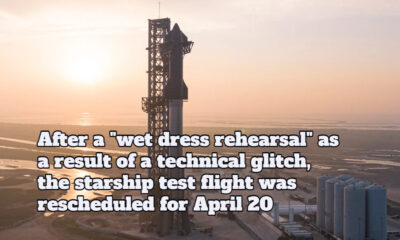News
In Iran, uranium with an 83.7% enrichment was found
Published
1 year agoon

The subterranean Fordo nuclear facility in Iran had uranium that had been enriched up to 83.7%, according to UN inspectors
The underground Fordo nuclear facility in Iran had uranium that had been enriched up to 83.7%, according to inspectors from the UN nuclear watchdog.
International Atomic Energy Agency (IAEA) report: .
Tensions over Iraan’s nuclear programme between the West and Iran are anticipated to increase as a result of the member nations receiving a classified quarterly report from the Vienna-based International Atomic Energy Agency.
Even then, Iraan is already experiencing domestic turmoil as a result of months of demonstrations and Western outrage over the shipment of bomb-carrying drones to Russia for its conflict with Ukraine.
Read Also:- Greece train crash Angry protests erupt after disaster.
The IAEA report simply mentions “particles,” indicating that Iran isn’t creating a stockpile of uranium that is more than 60% enriched, which is the level at which it has been enriching for a while.
According to the IAEA report, inspectors found that two cascades of IR-6 centrifuges at Iran’s Fordo plant had been set up “significantly differently” than what had been previously disclosed on Jan. 21.
The next day, the IAEA collected samples, which revealed particles with a purity of up to 83.7%, according to the report.
In addition, the IAEA report stated that following the discovery, it will “further expand the frequency and intensity of agency verification efforts” at Fordo.
Nuclear Agreement with Iran:
The 2015 nuclear agreement with Iraan set a cap on Tehran’s uranium stockpile at 300 kilogrammes (661 pounds) and 3.67% enrichment, which is sufficient to run a nuclear power plant. After the U.S.’s unilateral withdrawal from the agreement in 2018, Iran launched a number of assaults and escalated tensions around its programme.
Iraan has been manufacturing uranium that has been purified to a level of 60% enrichment, for which nonproliferation specialists have previously said that Tehran has no civilian purpose. According to the IAEA assessment, Iran has an estimated 3,760 kilogramme (8,289 pounds) of uranium on hand as of February 12 – an increase of 87.1 kilogrammes (192 pounds) since its previous quarterly report in November. Of it, 192 pounds (or 87.5 kilos) are purified to 60%.
Additional Information on the 2015 Nuclear Agreement: Joint Comprehensive Plan of Action (JCPOA):Iran and the P5+1 group of international powers—the United States, United Kingdom, France, China, Russia, and Germany—agreed in 2015 on a long-term agreement over its nuclear programme.
Joint Comprehensive Plan of Action (JCPOA), often known as the Iran Nuclear Agreement, is the official name of the agreement.
Iran agreed to limit its nuclear activity as part of the agreement in exchange for the easing of sanctions and opening of commercial relations.The pact forbade the enrichment of uranium, which is needed to build nuclear weapons and reactor fuel, but it permitted Iran to amass tiny amounts of uranium for research.
Iran was also compelled to enable foreign inspections and modify a heavy-water reactor that was being built and whose spent fuel may contain plutonium suitable for a weapon.
About International Atomic Energy Agency:The IAEA is the global hub for nuclear field cooperation and is well-known as the world’s “Atoms for Peace and Development” agency inside the United Nations family.In response to the intense anxieties and hopes brought on by the discoveries and varied applications of nuclear technology, the IAEA was established in 1957.
Important facts.
- OFFICAL NAME: Republic of Iran
- FORM OF GOVERNMENT: Islamic republic
- CAPITAL: Tehran
- POPULATION: 83,024,745
- OFFICAL LANGUAGE: Farsi
- CURRENCY: Rial
- PRESIDENT: Ebrahim Raisi
- AREA: 636,372 square miles (1,648,105 square kilometers)
- MAJOR MOUNTAIN RANGES: Elburz, Zagros
- MAJOR RIVERS: Karun, Karkeh, Zayandeh.
What was the purpose of the Iraan nuclear Deal?
You may like
-


Twitter’s paywall system has been removed from its application programming interface
-


After a “wet dress rehearsal” as a result of a technical glitch, the starship test flight was rescheduled for April 20
-


Q1 2023, Netflix added 1.75 million new subscribers. Ad-Supported Tier Following Crackdown on Password Sharing
-


Elon Musk will develop ‘truth-seeking’ AI to compete with Google and Microsoft in the AI race
-


Sundar Pichai, the CEO of Google, alluded to more job cuts at the tech giant
-


Truecaller Launches Live Caller ID for iPhone Users

